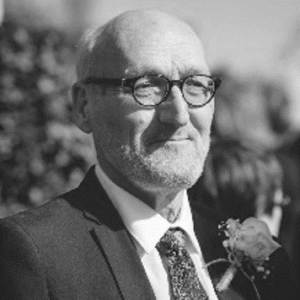
Biosergens vd om bolagets IPO
Efter mer än 20 års forskning står Biosergen inför sin kliniska debut, ackompanjerat av en börsnotering och nyemission. Bolagets utvecklingsfokus är en helt ny behandling av invasiva svampinfektioner, ett område där endast en ny klass av svampdödande läkemedel har utvecklats på tre decennier. BioStock har talat med bolagets vd Peder M. Andersen, som berättar mer ingående om bolagets pipeline och planerna framåt.
När det gäller problem med svampinfektioner tänker de flesta i första hand nog på lättbehandlade infektioner i hud, slemhinnor och naglar. Invasiva svampinfektioner däremot, riskerar att leda till att patienten avlider, speciellt i fall där interna organ, såsom lungorna, tarmen, urinvägarna och hjärnan, infekteras.
Risken ökar hos patienter med ett försvagat immunförsvar, t.ex. vid cancer, HIV, dialysbehandling, samt hos patienter som genomgår organtransplantationer och större operationer. En övergripande risk löper patienter som ordinerats immunosuppressiva läkemedel.
Biosergen utvecklar BSG005 mot invasiva svampinfektioner
 Det norska bioteknikbolaget Biosergen bygger på två decennier av forskning vid Norwegian University of Science and Technology (NTNU) i Trondheim, i samarbete med The Foundation for Scientific and Industrial Research at the Norwegian Institute of Technology (SINTEF).
Det norska bioteknikbolaget Biosergen bygger på två decennier av forskning vid Norwegian University of Science and Technology (NTNU) i Trondheim, i samarbete med The Foundation for Scientific and Industrial Research at the Norwegian Institute of Technology (SINTEF).
Med expertis inom biosyntetisk teknik bedriver Biosergen ett utvecklingsprogram mot systemiska svampinfektioner, med fokus på den primära läkemedelskandidaten BSG005. Bolaget har skickat in en ansökan om att få påbörja kliniska fas I-studier i Australien med kandidaten, som har visat på ett brett spektrum av antifungal aktivitet. Biosergen förbereder sig nu för att ta nästa steg mot att inleda en klinisk fas I-studie i augusti i år, samtidigt som man står inför en börsnotering och emission.
The CEO comments
BioStock reached out to Biosergen’s CEO Peder M. Andersen to find out more about the company and what the plans are for the coming year.

Peder, can you start out by telling us about yourself and your professional background?
– I am a Danish citizen, living in Copenhagen and has a medical background from Copenhagen University Medical School, 7 years in the hospital sector and about 30 years in the pharma industry. I have worked in several different indication areas (oncology, diabetes, dermatological, heart insufficiency, MS and now anti-fungals), in different large and medium sized Pharma companies (old Sandoz, Novo Nordisk, Orion Pharma) and in many years in small biotech companies (Astion Pharma, Forward Pharma, Biosergen). With the Orion product Simdax (heart insufficiency) I was heading the finalisation of phase III and the registration with the Swedish agency as rapporteur. I also co-founded a Danish Pharma company – registered 12 specialty and generic products – affiliates in Finland and Norway – before we sold it to a larger generic company. In 2014 I was as CEO in Forward Pharma heavily involved in the public noting of the company on the New York Nasdaq stock exchange which gave the company 235 M USD. So, I have been here before although there is a difference between going public in Sweden and in the USA.
How did you come into contact with the technology that Biosergen are developing?
– When I left Forward Pharma in 2017 the Chairman of Biosergen contacted me and presented the company and the technology/BSG005. I reviewed the information and could see that this was an exciting development and could potentially cover a big need in the patient populations in question. So I accepted to come into Biosergen and work closely with Dr. Goesch and the team of experts working with the company. The fact that it was a small company working virtual and outsourcing all tasks – with no offices and no labs was something I was used to do. So we just started out at once.
There are no effective drugs targeting invasive fungal infections on the market. How does your candidate BSG005 differ from these treatments, based on the data you have from preclinical models and experiments?
– There are not a lot of options, and only one new drug was approved in the last 10 years. Most current drugs are only inhibiting growth of fungals in the organs of patients. There is increasing resistance to a number of products in the available classes of products e.g. Azoles and Echinocandins. And there are also “holes” in the effect on special fungal strains from many of these products. So, today a number of combinations of products are required to do the job. That also why the World Health Organization has called the growing resistance to the old antifungals a global threat.
– The polyene macrolide class drug called Amphotericin B is fungicidal and there has been no resistance building in spite the product has been on the market for 50 years. The problem is, it is so toxic, and despite five decades of research into other formulations, nobody has managed to crack this nut. The holy grail is a new antifungal with Amphotericins efficiency but without its toxicity, and that is what we believe we have in our hands now. BSG005 is from the same class of drugs (polyenes) but has been genetically modified in the producing host (a bacterial strain) with the result as seen in our preclinical and toxicological data that BSG005 has a very broad efficacy range – also on resistant strains – is very potent and show high survival in mouse models – and does not in our rat and dog toxicology show any adverse effect on the kidney. It was very positive with such clean data.
Only one new class of antifungal drugs has been developed in the last 30 years. What would you say is the reason for this?
– Anti-infectives has more or less been left out of research because there were other more profitable development areas (cancer, immunology, neurology etc) where patient treatment is long lasting or life-long. Anti–infectives – whether bacterial or fungal – are short term treatments for days or few weeks and because especially clinical trials are generally large and expensive. So large pharma just withdrew from this area.
Multidrug Resistance (MDR) poses a serious and global health risk. What are the threats we are facing, in relation to your candidate?
– MDR is a serious challenge whether for bacteria or fungus. Over past years the candida aurius strain has exhibited such MDR and this has been a serious problem with several products and it has closed hospital departments because once it is in, it is very hard to get it cleaned out.
– We have done preliminary tests of BSG005 and AmpB on some of these multi resistant candida auris strains and in general the minimal fungicidal concentration of BSG005 seems to be lower than for AmpB. We will need to do more test on this MDR issue.
You are now carrying out an issue of 50 MSEK. How will the proceeds be used?
– Depending on the final amount of proceeds that the IPO will provide to Biosergen we have 3 main objectives:
- Run and complete our important phase I trial in Australia.
- Manufacture BSG005 for phase II and advance our program into the phase II trial program.
- Advance our nano formulation program as far as possible towards a clinical ready status.
Following the issue the plan is to list the company’s share on NASDAQ First North Stockholm. What are the main reasons you are now turning to the stock exchange after 20 years of R&D?
– Biosergen has had a group of investors that have been very supportive financially over many years. But in the current situation where we a moving into the expensive part of the development the need for cash is considerably higher than what our current investors can handle. Therefore, the timing compared to our clinical program is very good. A positive outcome of the phase I trial (a safe and tolerated anti-fungal) will boost the possibilities because it is well known (and shown in our pre-clinical testing) that a polyene antifungal will be efficacious against a very broad range of fungus and moulds and leave very little doubt for a positive outcome in phase II patients.
Finally, what milestones do you hope Biosergen will be able to achieve within a year, and three years, respectively?
– For the next 12 months the main milestones are:
- Get Orphan Drug status for BSG005 with the FDA and EMA
- Get top-line data from phase I
- Manufacture for initiation of phase II trials
- Submission of clinical trial application for at least one phase II trial.
For the next 3 years the main milestones are:
- Pre-IND meeting with the FDA and submit an IND.
- Get QIPD approval from the FDA
- Get top-line data from the first phase II trial and initiate/run the remaining phase II trials
- Secure full-scale manufacture for phase III and initial commercial manufacture
- Advance nano-project into clinical development.
- Present phase II data for the FDA and discuss the phase III program
Innehållet i BioStocks nyheter och analyser är oberoende men BioStocks verksamhet är i viss mån finansierad av bolag i branschen. Detta inlägg avser ett bolag som BioStock erhållit finansiering från.

